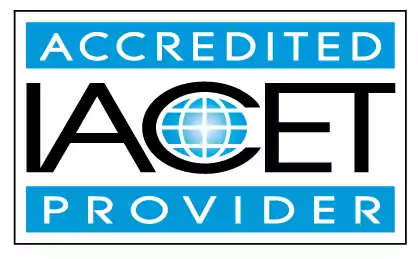Distinguish how to adapt arts and crafts for younger children and children with different abilities.
Learn how to adapt arts and crafts for younger children and children with different abilities. Discover effective techniques to modify materials and equipment for children with diagnosed special needs or delay. Perfect for early childhood educators and child care centers seeking inclusive activities.Trainings incorporating this outcome
Proficiency Level
Target Audience
States
Alabama (5) Alaska (5) Alberta (7) Arizona (5) Arkansas (3) Australia (5) California (5) Colorado (5) Connecticut (5) Delaware (5) District of Columbia (5) Florida (5) Georgia (4) Hawaii (5) Idaho (5) Illinois (3) Indiana (5) Iowa (5) Jamaica (5) Kansas (5) Kentucky (3) Louisiana (5) Maine (5) Manitoba (5) Maryland (7) Massachusetts (5) Michigan (5) Minnesota (5) Mississippi (5) Missouri (3) Montana (5) Nebraska (4) Nevada (3) New Hampshire (5) New Jersey (3) New Mexico (5) New York (4) Newfoundland and Labrador (5) North Carolina (3) North Dakota (5) Nova Scotia (5) Ohio (5) Oklahoma (5) Ontario (3) Oregon (4) Pennsylvania (5) Prince Edward Island (5) Puerto Rico (5) Quebec (5) Rhode Island (5) Saskatchewan (5) South Carolina (3) South Dakota (5) Tennessee (3) Texas (4) Thailand (5) United Kingdom (5) Utah (5) Vermont (5) Virgin Islands (5) Virginia (5) Washington (5) West Virginia (5) Wisconsin (4) Wyoming (4)
120 hours courses
45 hours courses
30 hours courses
2 hours courses
Related Outcomes
- Identify the types of barriers children's with disabilities/special needs face and ways to adapt curriculum to fit those needs.
- Identify appropriate practices for identify and demonstrate an children: Identify examples of appropriate activities for different ages
- Describe the stages of grief and the different ways children react to grief and stress.
- Recognize the importance of providing activities that reflect a welcoming environment for all children, youth and families, regardless of culture, language, or religion, or strengths, talents, and abilities.
- Identify different types of barriers for mixed ages with disabilities and ways to adapt curriculum to fit their needs.
- Identify adaptations to materials and equipment for children with diagnosed special needs or delay
- Describe the difference between unintentional injuries and nonfatal injuries children can experience.
- Identify different types of play in children ages 2 to 5.
- Recognize the importance of demonstrating respect for all diversity and providing activities that reflect a welcoming environment for all children, youth and families, regardless of culture, language, or religion, or strengths, talents, and abilities.
- Identify ways to support children’s development using the arts.
- Identify different learning styles of young children
- Recognize that children develop independence at different stages.
Related Articles
- Children and the Arts
- Unlocking Creativity and Fine Motor Skills with DIY Scratch Art
- The Ultimate Guide: Creating Effective Lesson Plans for Child Care Providers
- Bridging Generations: Creative Activities to Celebrate National Senior Citizens Day with Kids
- Seasonal Changes and School Prep: Adapting to Weather and Activities
- The Family Day Care Chronicles: Tales of Laughter, Learning, and Unexpected Adventures
- Incorporating Technology in Childcare: Balancing Screen Time and Hands-On Activities
- School Days, Fun Ways: Designing a Curriculum for the Big Kids
- Balancing Routine and Flexibility: Creating a Structured Yet Adaptable Schedule for Children
- The Glitter Conundrum: Why It’s Both the Best and Worst Thing to Happen to Childcare Crafts
- National Hug a Bear Day: Use Stuffed Animals to Teach Empathy and Care
- The ABCs of ECE: Why Childcare Education Courses Are the Ultimate Parenting Hack
- How to Manage a Classroom with Multiple Age Groups
- How motor skills shape child development and creative ways educators can foster them.
- 10 Fun and Engaging Ways to Teach Kids About Black History Month!
- Creating Inclusive Events that Celebrate All Families and Cultures
- Open-Ended Art Activities That Build Confidence in Preschoolers
 12 CEUs
12 CEUs